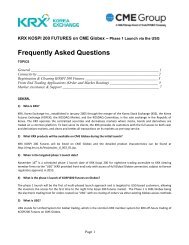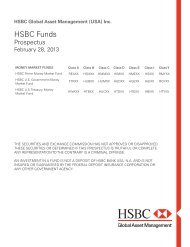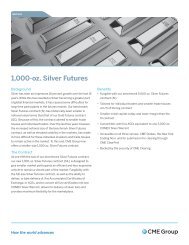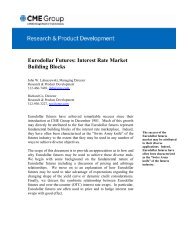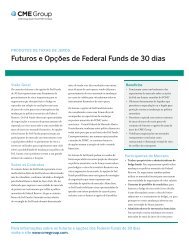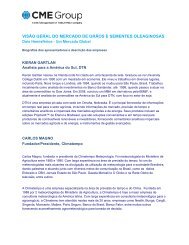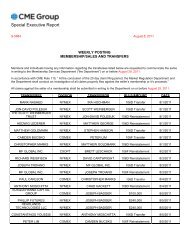You also want an ePaper? Increase the reach of your titles
YUMPU automatically turns print PDFs into web optimized ePapers that Google loves.
Japan economy: A new policy landscape<br />
April 18 2013<br />
FROM THE ECONOMIST INTELLIGENCE UNIT<br />
As the dust settles after the announcement in early April by the Bank of Japan<br />
(BOJ, the central bank) of its ambitious new programme of monetary expansion, it<br />
is worth taking stock of the main features of the policy and its implications. There<br />
is no question that the BOJ has embarked on a radical course that will be keenly<br />
watched by policymakers and financial investors around the world. But while<br />
anticipation of the policy change and its subsequent announcement have already<br />
had a pronounced effect on financial markets, the ability of the new measures to<br />
fulfil their main purpose of generating sustainable mild inflation and reviving<br />
Japan's "animal spirits" remains in doubt.<br />
It is hard to overstate the scope of the BOJ's new stance, which should be understood in the<br />
context of the dramatic change in policy outlook that has occurred since the Liberal<br />
Democratic Party (LDP) returned to power in December 2012. The new prime minister,<br />
Shinzo Abe, is pursuing expansionary policies in an effort to put Japan on a sustainable<br />
economic growth path and overcome deflation. Since the start of 2013 his administration<br />
has introduced an emergency fiscal-stimulus package, has presided over two major<br />
adjustments to monetary policy in quick succession and has championed the appointment of<br />
a less inflation-averse BOJ governor, Haruhiko Kuroda. In particular, the central bank's<br />
most recent policy decision on April 4th constitutes a radical escalation of its commitment to<br />
monetary expansion, with the introduction of an asset-buying programme far greater in<br />
scale than anything that it has attempted in the past.<br />
Policy shake-up<br />
The shake-up of economic policy partly reflects a political calculation based on the size of<br />
the LDP's new majority in the House of Representatives (the lower house of parliament)—<br />
where the party controls 294 seats out of 480, following big gains at the December 2012<br />
general election—and its hopes of regaining control of the House of Councillors (the upper<br />
house) in July this year. Mr Abe, who is in his second stint as prime minister, is well aware<br />
that his previous premiership in 2006-07 was cut short as a result of neglect of the<br />
economy. He does not intend to repeat that mistake, and government policy in the next few<br />
months will in part be geared towards winning the upper house poll.
Mr Abe's economic agenda is having its greatest impact in the area of monetary policy. The<br />
prime minister has put pressure on the central bank to increase monetary stimulus. This<br />
initially resulted in the announcement at the BOJ's January policy meeting of a shift to an<br />
explicit 2% inflation target and the introduction of an open-ended quantitative easing (QE)<br />
programme from 2014. At the time, we considered these policy changes to be potentially<br />
the most important in Japan for many years, but they have been trumped by more recent<br />
events, following Mr Kuroda's appointment as governor of the BOJ on March 20th.<br />
New course<br />
Mr Kuroda, a former president of the Asian Development Bank, has wasted little time in<br />
setting a new course. In early April the BOJ switched from targeting interest rates to<br />
targeting the monetary base, under a programme that it calls "quantitative and qualitative<br />
easing". This recalls the period 2001-06, when the BOJ pioneered QE (then still an obscure<br />
policy internationally) by targeting the levels of current-account balances that commercial<br />
banks held with it. Although the central bank's latest programme is similar in some respects<br />
to the original one, it is much more ambitious. The BOJ aims to double Japan's monetary<br />
base from ¥138trn (US$1.4trn) at end-2012 to ¥270trn by end-2014. It will increase its<br />
holdings of Japan government bonds (JGBs), exchange-traded funds and real-estate<br />
investment funds. The bank will also buy longer-dated JGBs, with the aim of encouraging<br />
risk appetite further along the yield curve.<br />
Monetary expansion has been accompanied by fiscal stimulus. In late February parliament<br />
approved a ¥10.3trn (US$105bn) central-government funding package focused on<br />
infrastructure. Adding in local-government and private-sector projects, the total value of<br />
stimulus is ¥20.2trn, equivalent to 4.2% of annual GDP. The budget for 2013/14 (April-<br />
March), which was approved by the lower house on April 16th, includes a 15.6% increase in<br />
public works spending. The total budget, however, is just 2.5% larger than last year, and<br />
although additional funds have been allocated to sectors that will boost economic activity,<br />
the government has made spending cuts in other areas.<br />
Will it work?<br />
The question is whether Mr Abe's policy changes will work on a chronically sluggish<br />
economy that has resisted previous stimulus efforts. Anticipation of QE, and its subsequent<br />
announcement, has boosted Japan's stockmarket and weakened the yen—notwithstanding<br />
some reversals in the past few days that are likely to have reflected investor concerns about<br />
the global economy (weak Chinese GDP data released on April 15th probably played a role).<br />
The wealth effect of rising Japanese asset prices could boost the real economy at the<br />
margins. At the same time, the BOJ's asset programme will almost certainly contribute to<br />
further yen weakness, benefiting exporters. Our latest monthly forecast for Japan expects<br />
the yen to be weaker than previously envisaged, with the currency averaging ¥98.3:US$1 in<br />
2013 and ¥102:US$1 next year.<br />
However, we remain doubtful about the ability of unorthodox monetary easing to flow<br />
through into wide-ranging and sustained gains in the real economy. Such improvements will<br />
require structural reforms; these are also part of Mr Abe's agenda, but their success is far<br />
from certain in the face of entrenched interests. Lingering overcapacity, high public debt<br />
and negative demographic factors will also continue to weigh on growth.<br />
We have recently revised up our projection of Japanese economic growth in 2013. We now<br />
expect real GDP growth of 1.1% this year, up from 0.9% in our previous forecast. However,
the upgrade is unrelated to the latest policy changes. Instead, it reflects the government's<br />
recent upward revision to national-accounts data (which now show that in the final quarter<br />
of 2012 GDP stagnated rather than contracting), as well as improving business and<br />
consumer confidence.<br />
Weak data<br />
Yet for now, signs of the improved growth momentum that we continue to expect in 2013<br />
remain scarce. The BOJ's latest quarterly Tankan survey of business sentiment was<br />
inconclusive, combining a degree of overall improvement with evidence that companies plan<br />
to reduce investment. Industrial output fell by 5.1% year on year in February, marking nine<br />
consecutive months of decline in this indicator. The disappointing trend in external demand<br />
for Japanese goods has also continued.<br />
Further, we remain sceptical that the BOJ will hit its target of 2% inflation in "about two<br />
years". Although deflationary pressures have been diminishing gradually in the past four<br />
years, and the new measures will build on this progress, there is much further to go before<br />
higher inflationary expectations become entrenched. The picture is complicated by potential<br />
tax developments. Our inflation forecast for 2013-17 is predicated on the assumption that<br />
increases in the consumption tax will take effect in April 2014 and October 2015. However,<br />
the approach of the upper house election, and the unpopularity of the planned tax<br />
increases, could prompt Mr Abe to hold fire. Abandoning the tax rises would lower price<br />
levels, making the BOJ's inflation target harder to attain.<br />
Economist Intelligence Unit<br />
Source: Economist Intelligence Unit



